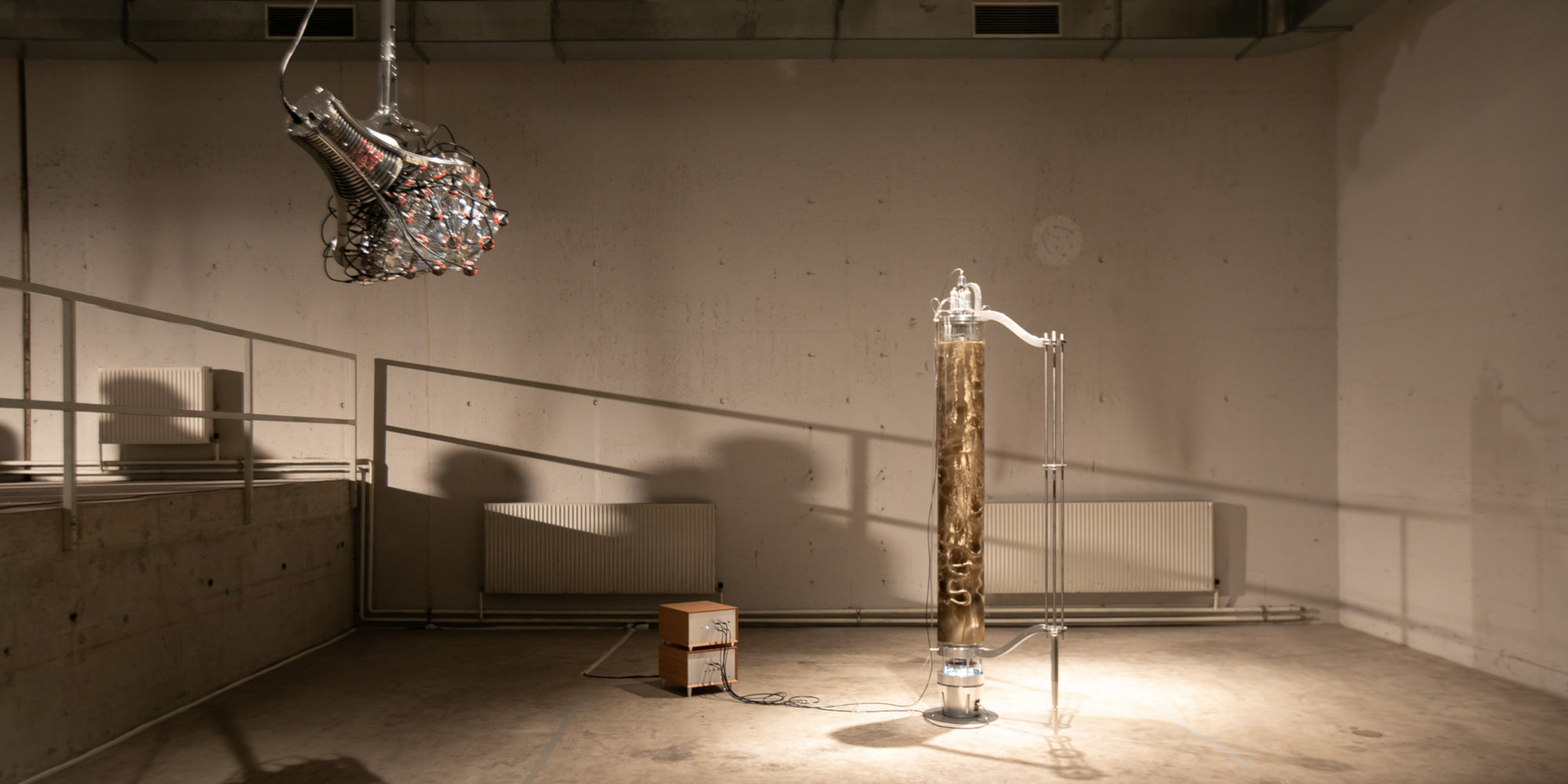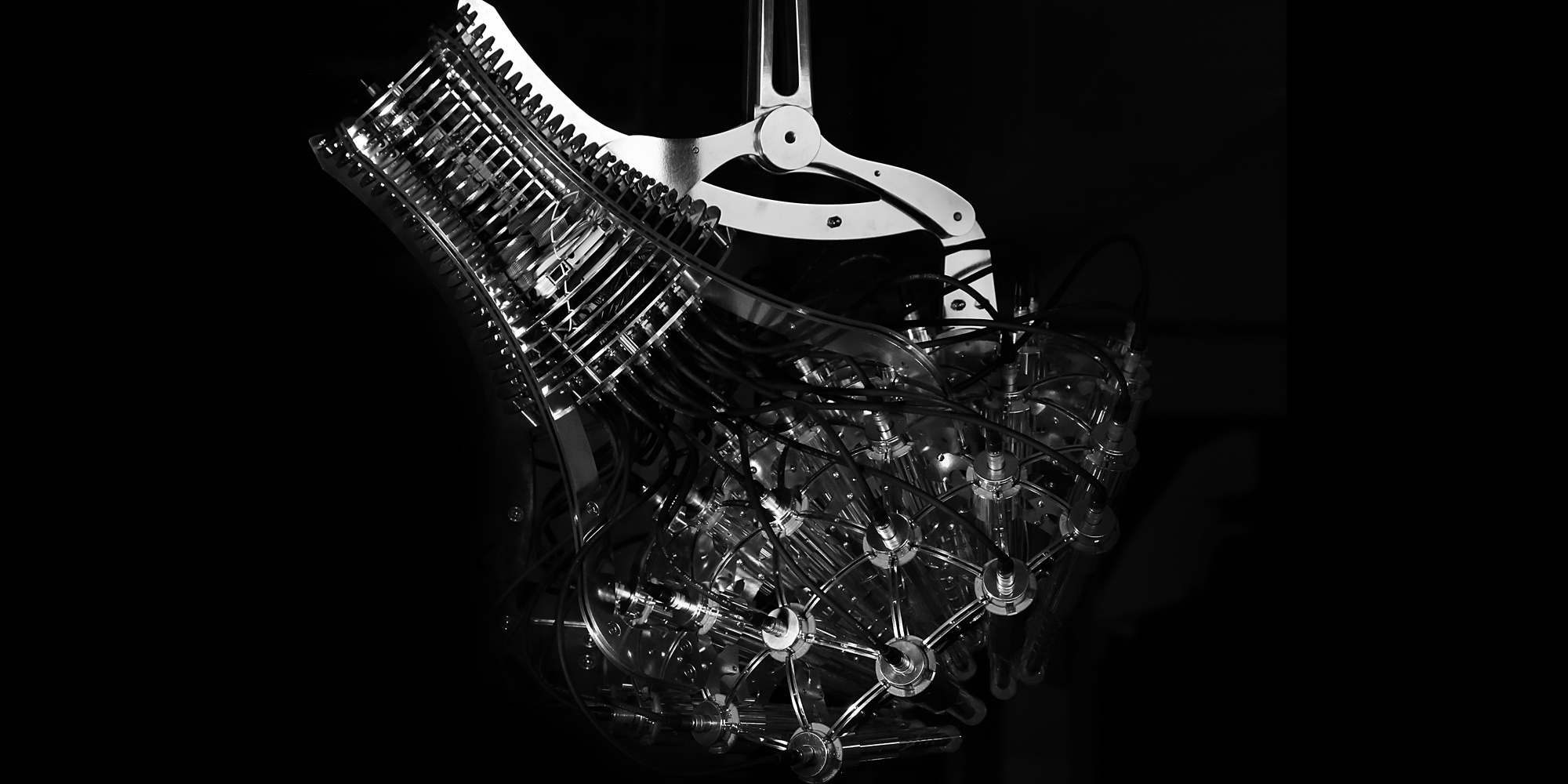The mechanical and fluidic events in Triaxial Pillars II are implicated in cosmic events which come through Argos. Triaxial Pillars II is a fluid kinetic installation which consists of multiple planetary, helical structures with 23 axes, a double acrylic cylinder filled with nano-sized photonic crystals, and Argos is a cosmic ray detector which consists of 41 channels of Geiger Müller tubes. When muon particles collide with Argos, it flashes a light and transmits signals to trigger the algorithm of fluidic movements in Triaxial Pillars II. This magneto-hydrodynamic action causes the mass of moving tiny particles to scatter and converge, and black hollows and shiny structures of metallic filaments are formed.
Particles, fluid, machines, other objects, and humans are interwoven in this work. It expands the spacetime of works, the reality of materials, materiality and even its meanings. Those material imaginations that come through the matter, or into matter, provide us with an affective material poetry that allows us to transcend the restrictions of language. It becomes reality through its materiality.

Credits:
Argos was developed as part of the Collide International Award, a partnership programme between Arts at CERN and FACT and was co-produced by ScANNER.



